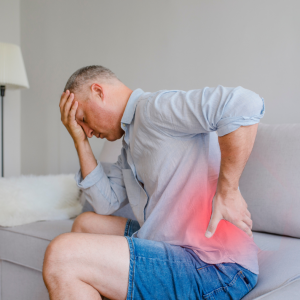In previous articles we have covered the recovery time frames for the lower body. This time we turn our focus to the lower back. Lower back pain is extremely common. In fact, it is estimated that over 80% of the population experience back pain at some point in their life. The causes of back pain can be varied and at times it can be difficult to narrow down the exact reason. For this reason this article will focus on recovery from acute episodes of what would be classified as non-specific lower back pain.
The onset of back pain can be troubling. In some instances there can be an onset of pain after overload such as after a day in the garden. In other situations, the pain comes on suddenly after what appears to be a normal activity such as reaching down to pick something up from the ground. In the latter example, it is usually not the “normal activity” that is the sole cause of the pain but rather a mild up over time of repeated stress, often without complete recovery between.
In any case, acute episodes of back pain that come on after either of the above typically start to settle down within 4 weeks provided they are given the right care. Irritation in the back responds best to regular position changes and short but frequent walks throughout the day. The walking should be at a normal pace rather than a slow pace as slower walking can actually require more effort and energy. Other pain free movements should be encouraged provided they don’t cause a significant increase in pain. Most often these involve bodyweight only until the area becomes more comfortable to move.
The road to recovery from acute episodes of back pain are often a little up and down rather than being a linear improvement in pain and function. The muscles and joints in our back area are under constant load whenever we are upright – whether seated or standing. When we have an injury or irritation to the back, the threshold for load is lower than normal and hence normal postural stress can build up and cause episodes of increased pain that don’t appear to be attributed to any other activities. It is important to be realistic about the likelihood of some minor increases in pain along the road to recovery so that you can be realistic about your progress.
Beliefs about pain have a large bearing on your recovery. It is important to explore different movement options and ensure that you don’t become fearful of movement. While some movements will be painful, there will also be many movement options that are not painful and it is important to keep perspective on this. Some acute episodes of back pain from musculoskeletal irritation can be severe and it is important to look for positive changes in the severity and duration of pain episodes. Good sleep is also a crucial part of recovery. Finding a comfortable sleeping position and focusing on getting 8 hours of rest can help to speed up the recovery time frame.

